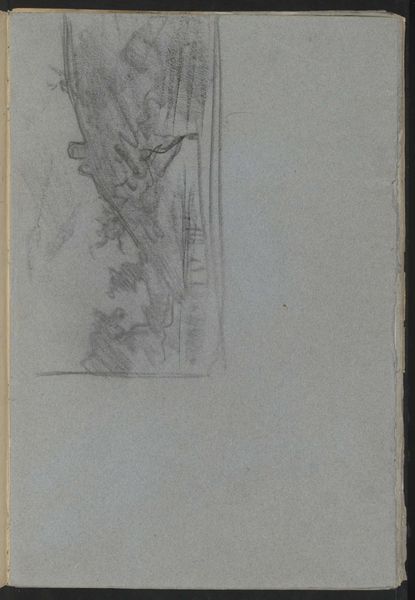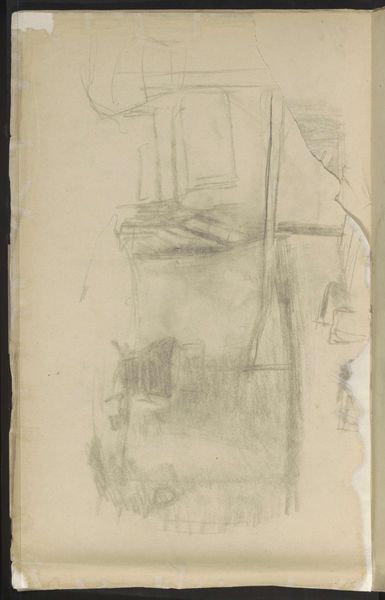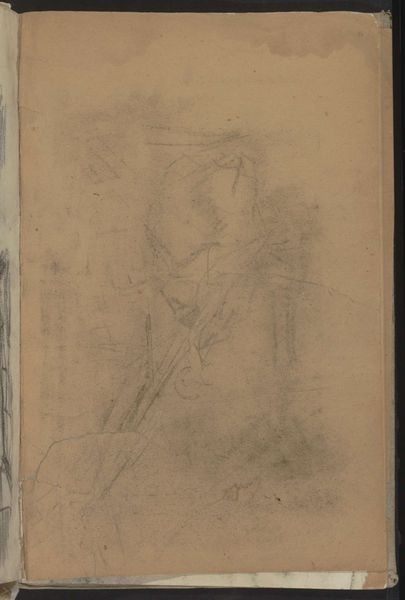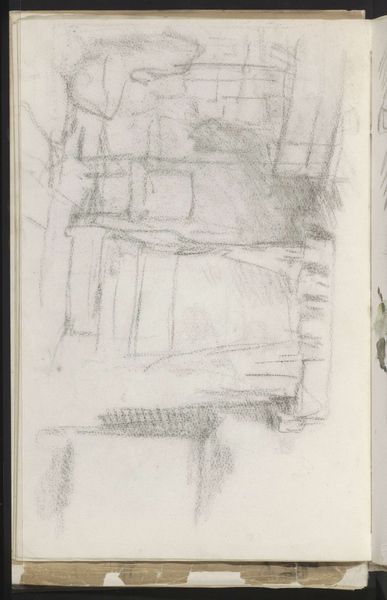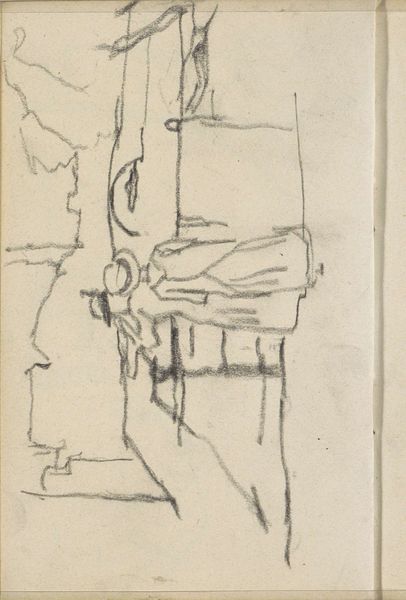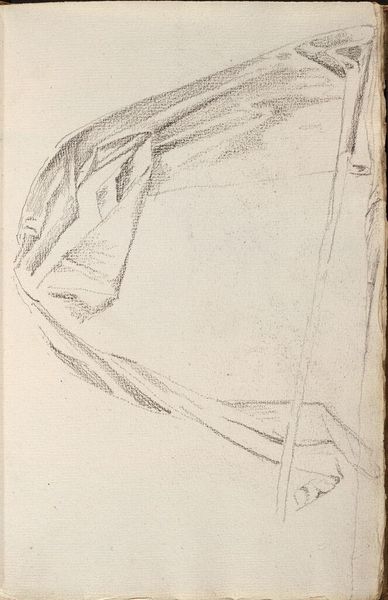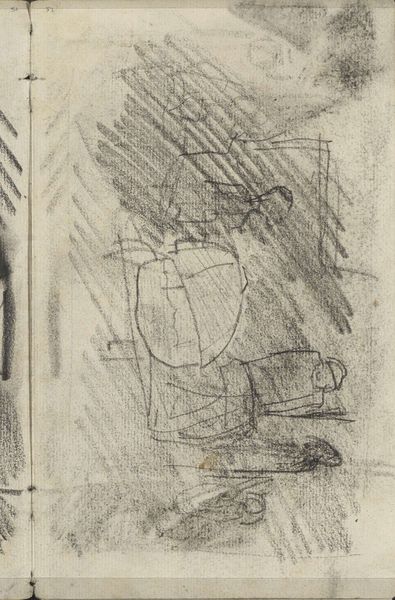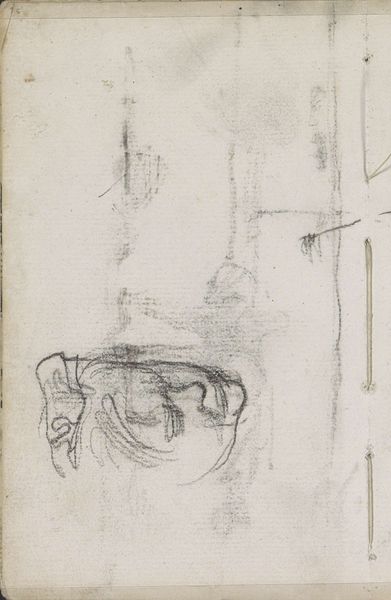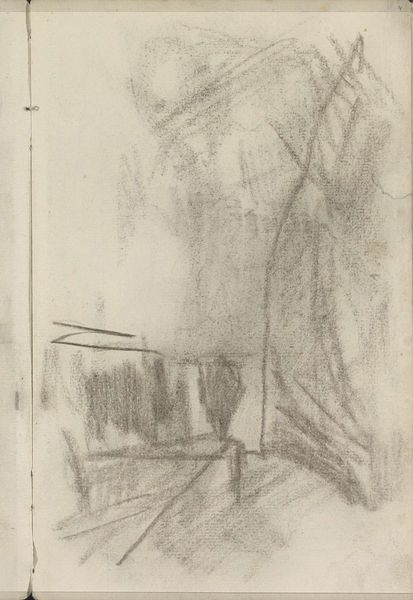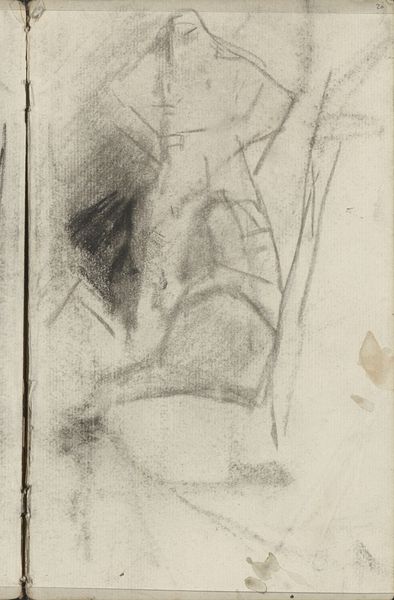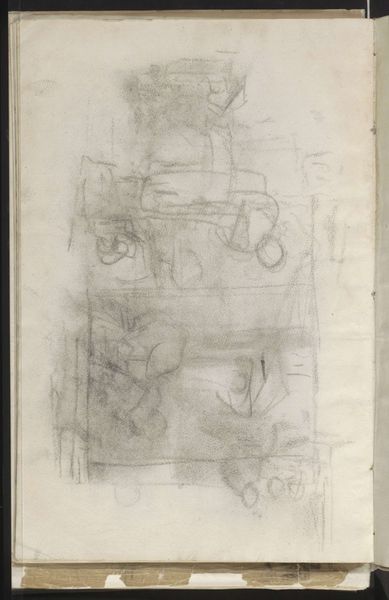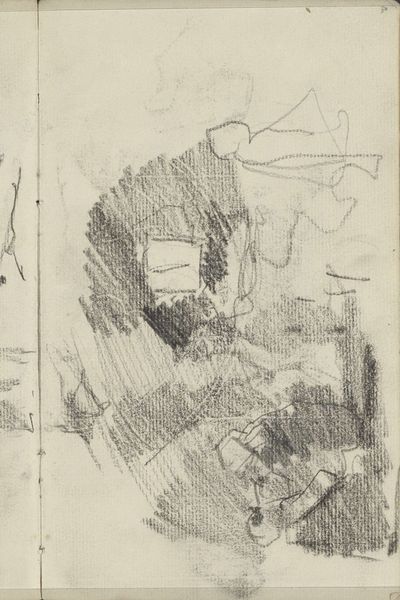
drawing, paper, pencil, graphite
#
portrait
#
drawing
#
figuration
#
paper
#
pencil
#
line
#
graphite
#
academic-art
Copyright: Rijks Museum: Open Domain
Editor: This drawing, titled "Studie," created between 1874 and 1925 by Jan Veth, seems to be a study of a draped figure, done in graphite and pencil on paper. It's quite gestural and the figure appears almost burdened. What narratives do you think it might be hinting at? Curator: The drawing evokes a sense of vulnerability. I am immediately drawn to the contrast between the flowing drapery and the implied weight of the subject within. Veth, working within a period of shifting social paradigms, could be seen here exploring themes of concealed identity. The subject's encasement, you might say, echoes broader constraints experienced especially by women of the era, the pressure of societal expectations weighing heavily upon them, masking their individuality. Editor: That’s an interesting idea. I hadn’t considered the figure as resisting the drape. It could almost be about protection too. Curator: Exactly. Consider the active role of the figure. Is she actively pulling the drapery tighter, seeking refuge from a potentially hostile environment? This tension – concealment versus protection – invites questions around social expectations of the period and, potentially, an interrogation of their purpose and impact. How can we situate Veth’s choice within prevailing ideas regarding class, propriety, and what it means to reveal oneself to society? Editor: I guess it’s about seeing the art as a document that raises many questions, not something that tries to answer everything. I initially saw it as just a draped figure drawing but considering the societal constraints really adds another layer. Curator: Precisely. By analyzing such historical and societal factors, art transcends aesthetic experience to become a lens that refracts understanding about past and current challenges.
Comments
No comments
Be the first to comment and join the conversation on the ultimate creative platform.
